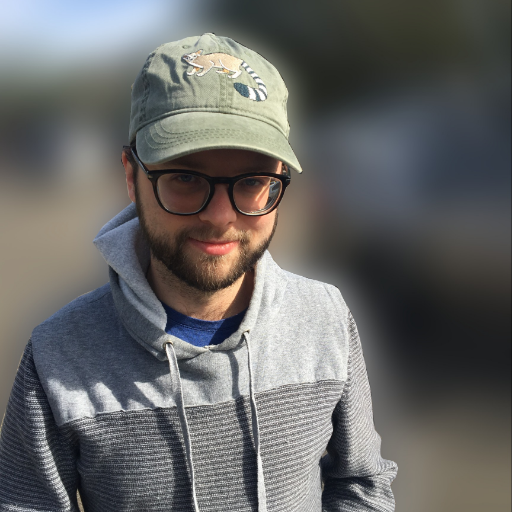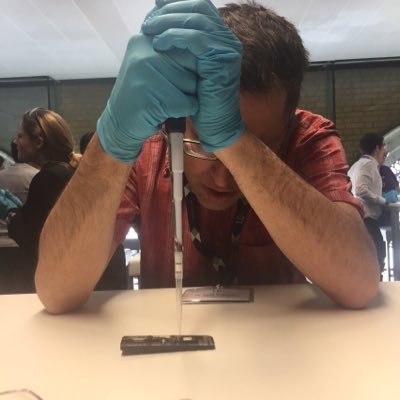
Matt McGuffie
@matt_mcguffie
Followers
222
Following
943
Media
8
Statuses
278
https://t.co/d09SLq4G8K Bioinformatics Lead at plasmidsaurus bacteriology, phages, plasmids, synthetic biology Not active here: https://t.co/AV6fh9uLDD
Bay Area, CA
Joined March 2018
What's 𝘢𝘤𝘵𝘢𝘶𝘭𝘭𝘺 hiding in your go-to cloning plasmid? The plasmids we use typically have long histories of cutting & splicing and forgotten junk often litters plasmids. Excited to announce the release of pLannotate:
10
114
396
I don't post much here, but recently the #content I see here is rarely relevant to me I finally explored bluesky and was excited to see basically everyone there! If you're waiting, the community has moved to bluesky and that's where you'll find me -- (@)matt-mcguffie
0
0
0
Did you know that BLAST searches used to be done by email?! I went down quite the rabbit hole for this video:
0
10
25
Refs this paper https://t.co/oadAKGio5D which describes new mycoplasma-related symbionts of coral with strange, reduced genomes #Microbiology #Evolution #Genomics #Symbioses
nature.com
Nature Communications - Corals and other marine invertebrates host diverse microbes that remain poorly characterized, especially in the deep sea. Here the authors discover a new clade of bacteria...
0
1
2
New preprint up! We sequenced hundreds of samples from across one of Earth's oldest living organisms - the Pando aspen clone - to understand how mutations accumulate and spread in long-lived clonal organisms. Our results were…surprising. 1/30
10
261
1K
The backstory behind the FASTA bioinformatics format https://t.co/trMoviV63S via @YouTube
3
22
114
1/11 Excited to share our latest paper in @GenomeResearch: "Complete genomes of Asgard archaea reveal diverse integrated and mobile genetic elements" 🧬🦠 @BanfieldLab
1
50
210
I'm starting my own scientific journal with @Curvenote Journals! https://t.co/mtLc1qDMMZ will have 🔬research ⬇️#opensource tools 👨🏫teaching materials ...for making science easier for scientists to do via better design. Video intro ▶️ https://t.co/ZaezTYYSz8
1
7
22
Come join our team! We are hiring a bioinformatics pipeline engineer, a backend software engineer, and a full-stack software engineer.
1
4
17
Amazing and comprehensive guide to adding, updating and debugging bioinformatics software tools on Bioconda by @jfy133 (expanding on his earlier blogpost) - if you do bioinformatics software dev, it is truly all you need to get started with Bioconda
1
14
50
Preprint on "BWT construction and search at the terabase scale". We can compress 100 human genomes to 11GB in 21 hours, find SMEMs with it, do affine-gap alignment and retrieve similar local haplotypes. 7.3Tb commonly sequenced bacterial genomes ⇒ 30GB https://t.co/DiRwZNHVVa
9
222
726
A new type of microbe discovered in the human gut! Called obelisks, they can create their own proteins that are entirely new to science. The team named their proteins “oblins.” Scientists scratching their heads about it https://t.co/uJn0Cm5BAT
16
261
946
One of the reasons I've been quiet on Twitter for a few months is because I've been working on something big - something I'm really happy to share now! https://t.co/m7KHsR3H8c A new, open-source database for pathogen sequence sharing. 👐🧬🌎 1/12
pathoplexus.org
Pathoplexus is a new, open-source database dedicated to the efficient sharing of human viral pathogen genomic data, fostering global collaboration and public health response.
27
248
774
A phage satellite manipulates the viral DNA packaging motor to inhibit phage and promote satellite spread.
academic.oup.com
Abstract. ICP1, a lytic bacteriophage of Vibrio cholerae, is parasitized by phage satellites, PLEs, which hijack ICP1 proteins for their own horizontal spr
1
3
5
SynGAP: a synteny-based toolkit for gene structure annotation polishing https://t.co/TfBitnuhWn
1
16
70
my boomer bioinfo take is that if reads are *unaligned* then they should not be stored in a SAM/BAM file.
14
3
53
One of my mentees just completed his second project with me: SciKit-Jax: https://t.co/nDPHmfEQCR Scikit-Learn does not leverage GPUs by itself and offers less flexibility in the model design. Scikit-Jax solves these! He will polish this to accommodate multi-GPU setups once we
github.com
Your favourite classical machine learning algos on the GPU/TPU - LiibanMo/scikit-jax
8
19
139
I finally got around to testing HERRO ( https://t.co/irsWGnjpT2), the new @nanopore read correction algorithm which takes simplex ONT reads to PacBio-HiFi-level accuracy. I was impressed! Findings are on my blog in a two-part post: https://t.co/unWf7fIMFS
https://t.co/yEllyimky8
3
76
229
I'm happy to share the results of my rotation with @lh3lh3: https://t.co/NzOORvk1TV We co-assembled reads from paired tumor-normal samples, then examined the structure of the co-assembly graph to identify large-scale somatic structural variation (focusing on translocations)
biorxiv.org
The accurate identification of somatic structural variants (SVs) is a problem with significant applications to clinical cancer research. Though technologies such as long-read sequencing have facili...
3
21
91
A BLAST from the past: revisiting blastp's E-value https://t.co/c0YWGNirio
#biorxiv_bioinfo
0
29
76
























